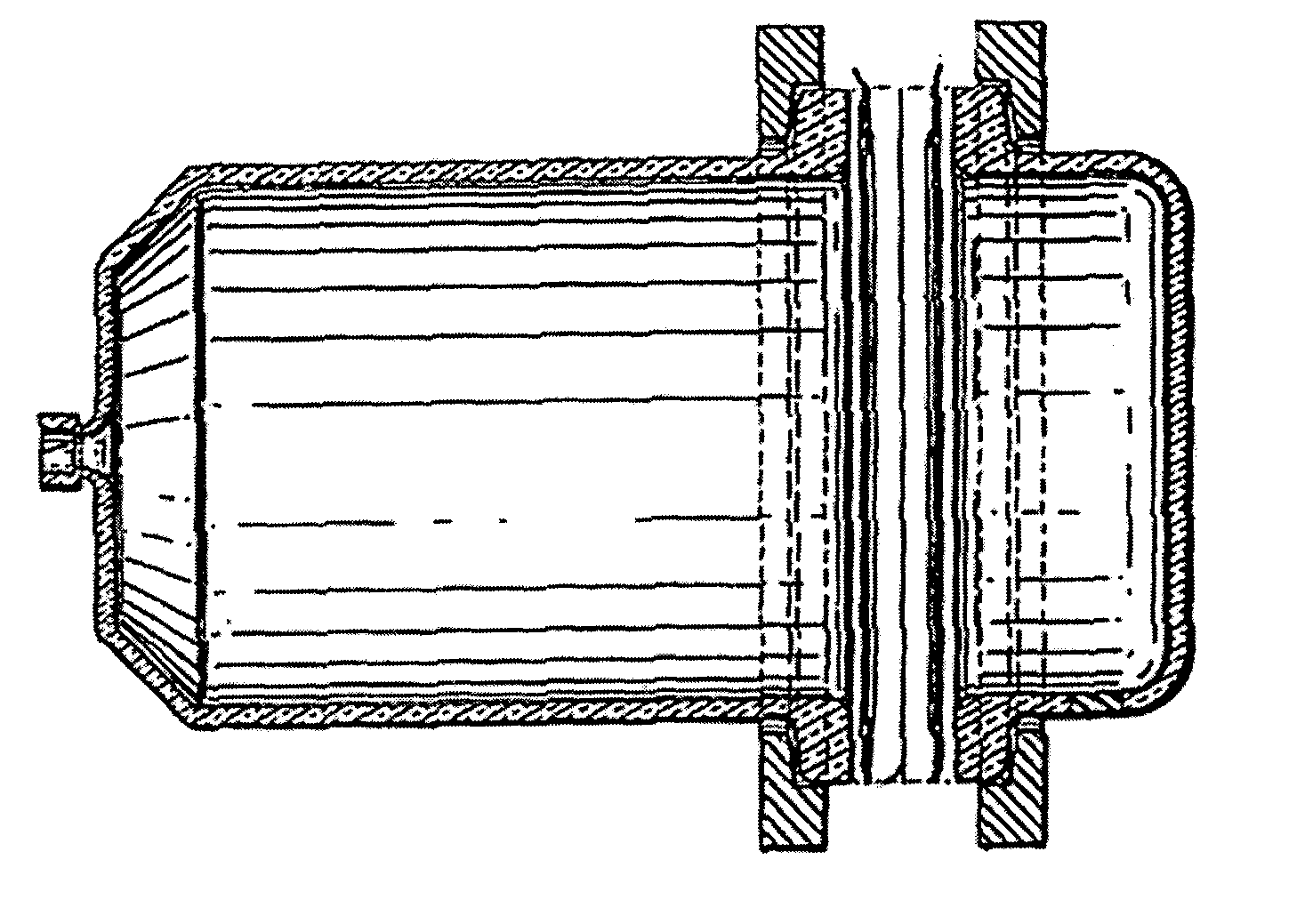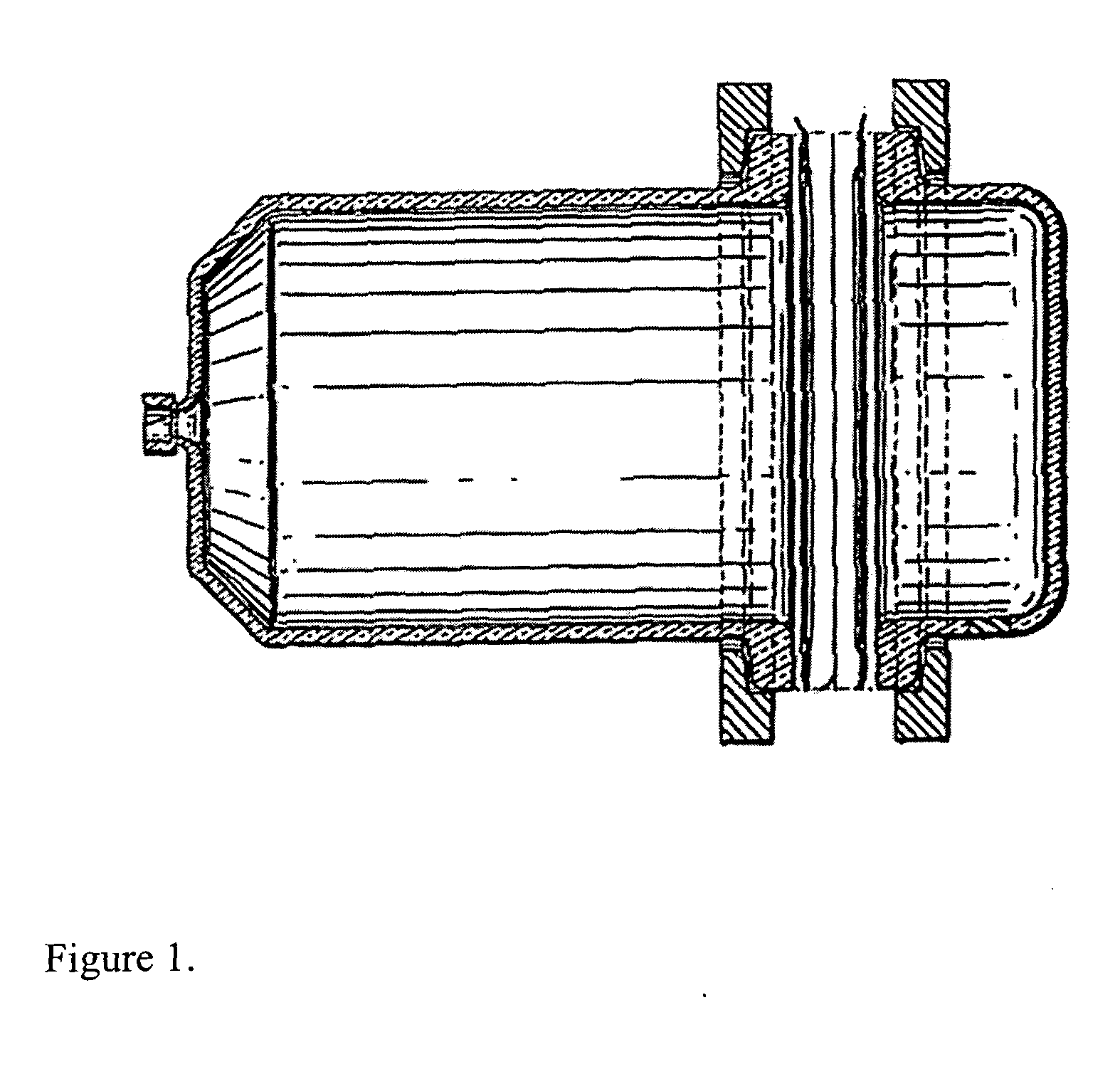Fiber material having improved malodor scavenger properties
a fiber material and malodor technology, applied in textiles and paper, synthetic resin layered products, medical preparations, etc., can solve the problems of limited barrier properties of thermoplastic garbage bags known in the art, high undesirable malodors emanating from such stored articles, and insatiable malodors, etc., to achieve the effect of improving the malodor scavenging properties
- Summary
- Abstract
- Description
- Claims
- Application Information
AI Technical Summary
Benefits of technology
Problems solved by technology
Method used
Image
Examples
example 1
Quantitative Sorption Performance of Nonwoven Mat.
Nonwoven mat reactivity and capacity was measured by placing test mats into a glass jar which is subsequently sealed and then filled with a reactive test vapor. Over the test time period, the headspace vapor partitions into the fiber. The vapor concentration is measured in the headspace of the glass jar as a function of time. These data are used to quantitatively measure the sorptive performance of these active nonwoven mats. The measured effect of the active zinc and / or cyclodextrin in the fiber matrix is a reduction in the vapor concentration in the jar compared to PP fiber without the active technology. The partition coefficient and diffusion coefficient will be identical for test mats since the PP polymer is identical. The headspace concentration over the test period (40 min) demonstrates the effectiveness of the test mats for removing volatile molecules from the headspace. Nonwoven test mat performance is then a function of t...
example 2
Sensory Evaluation of Nonwoven Mat for Malodor Reduction.
A synthetic diaper malodor concentrate (produced by Bush Boake Allen, Ltd.) was used to evaluate the odor reducing performance in the nonwoven mats in Table 2. Analysis of the “neat” malodor concentrate by gas chromatography mass spectrometry indicated approximately fifteen major compounds (Table 6). The general classes of chemicals contained in the synthetic malodor are organic acids, sulfur, nitrogen and aromatic alcohol compounds. Most of the compounds identified in Table 6 have human sensory thresholds in the low parts per billion, and for one compound, 3-methylindole (skatole), a threshold in the low parts per trillion. Skatole is a common fecal odor. Research literature on volatile malodor-causing substances in human waste (feces and urine) show about 90% of the malodor causing substances were fatty acids: acetic acid, propanoic acid, and butyric acid. Ammonia is listed at about 6.5%. Other malodor-causing minor subst...
PUM
| Property | Measurement | Unit |
|---|---|---|
| diameter | aaaaa | aaaaa |
| diameter | aaaaa | aaaaa |
| diameter | aaaaa | aaaaa |
Abstract
Description
Claims
Application Information
 Login to View More
Login to View More - R&D
- Intellectual Property
- Life Sciences
- Materials
- Tech Scout
- Unparalleled Data Quality
- Higher Quality Content
- 60% Fewer Hallucinations
Browse by: Latest US Patents, China's latest patents, Technical Efficacy Thesaurus, Application Domain, Technology Topic, Popular Technical Reports.
© 2025 PatSnap. All rights reserved.Legal|Privacy policy|Modern Slavery Act Transparency Statement|Sitemap|About US| Contact US: help@patsnap.com



